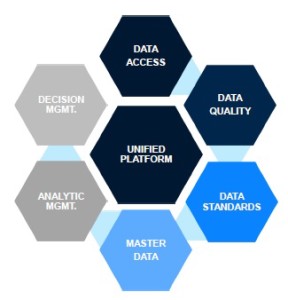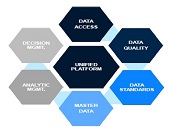“Banks need technology to help with Basel IIII compliance because moving from Basel I to Basel III is a quantum jump,” said Tom Kimner, Head of Americas Risk Practice at SAS Institute. He was the second of two panellists at a webinar held on September 16, 2014, organized by the Global Association of Risk Professionals to discuss the Basel III Standardized Approach for mid-tier banks.
Kimner began by outlining five key issues to Basel III compliance:
Data Structure and Validation – The data on credit exposures necessary for capital calculations needs to be cleaned and transformed. “An entire body of work goes into sourcing” the data.
Risk and Financial Reconciliation – In bygone years, risk was separated from the finance department at most banks. Now, “a transformation from underlying assets to the balance sheet” is needed. “Risk data used must be reconciled with general-ledger financial data before it is reported to regulators for capital adequacy,” Kimner noted.
Capital Calculation Updates – “These are driven off a series of rules,” said Kimner. “It’s important to make sure the right capital rules and the latest rules have been applied consistently and as intended.”
Risk Reporting – “This is not just about regulatory compliance,” it’s about improving the availability of risk information to decision-makers. “[Banks] want the ability to drill down and see the cumulative effect,” said Kimner.
Auditability – “Audit wants to work back to source data” increasingly often. A system should “demonstrate transparency down to the source data level… Small banks need to be able to document all capital classification and computation rules to a sufficient degree to meet regulatory requirements.”
The data management team is called on to create data strategy and regulations — which Kimner characterized as “a moving target” since “we expect, over time, changes to the rules, the data, and how it is sourced.” Data gaps must be addressed, because “missing information can mean a punitive risk weight will be assigned,” he said.

The key issues and the mutable parameters and environment led Kimner to propose an integrated data platform as the best solution. The platform should be easy to access, with the ability to test scenarios as needed. Additional considerations are: data availability, model risk, and model breakdowns, having a firm-wide view, and being able to reuse hard-won information.
A good system “must be able to replicate the process when the regulator comes in” with fast turn-around. A robust process can be used quarter after quarter. This is yet another reason for adopting a software solution.
The regulators require a more granular view of information than previously. “The process must be repeatable and you must be able to demonstrate how you got the result,” said Kimner. The bank should be able to prove governance around the calculation. As a counter-example, he reminded the audience of the Supervisory Capital Assessment Program (SCAP) process five years ago “when the big banks found their processes were not repeatable.”
Kimner closed on a reminder of the key factors to address in the holistic risk approach: accuracy, transparency, efficiency, compliance, and completeness. These are significant factors to address, and this, he said, is why banks need technology to help with Basel III compliance. ª
Click here to view the webinar presentation this is based on. Tom Kimner’s section is contained in slides 34 to 42.
Click here to read about the first presentation on Basel III Standardized.
Read about Tom’s earlier presentations in the TextMedic blog:
- Tom Kimner’s May 2013 presentation on stress testing.
- Tom Kimner’s September 2013 presentation on risk analytics.
Read SAS articles about Basel III readiness:

